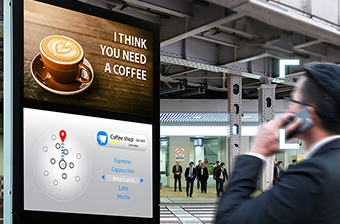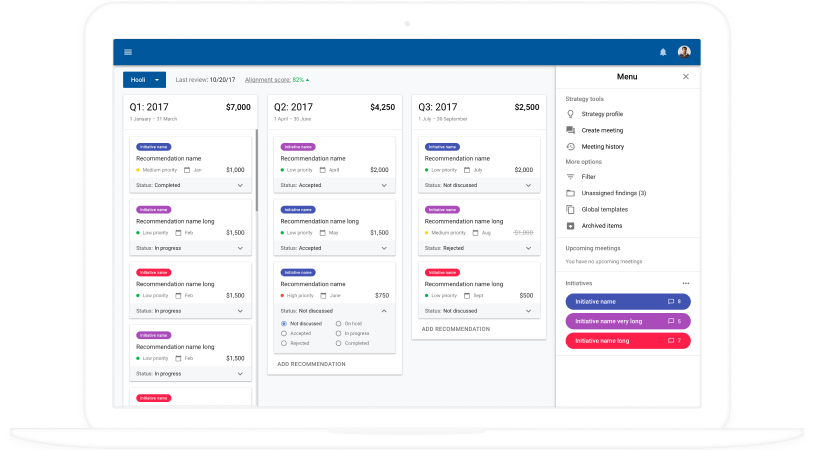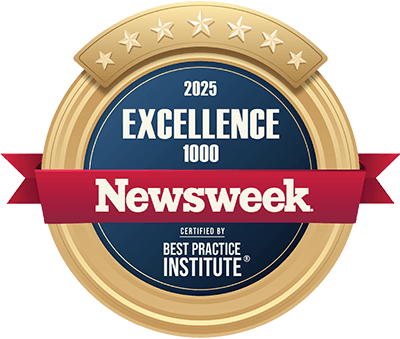Software Development Automation
Automate Your Way to Successful Software Delivery
With over 36 years of experience in delivering custom software, ScienceSoft offers a comprehensive guide to automating software development.
Software Development Automation: The Essence
Automation in software development is a way to minimize errors during the software development process, make it faster and more cost-efficient, and improve team collaboration and productivity.
Automation tools and techniques can be used at almost every step of the SDLC: requirements gathering, design, coding, testing, deployment and maintenance.
|
|
|
|
|
Note: This page is about the automation of the software development process. If you are interested in business automation, please use the following links: |
|
|
|
Most Common Development Automation Challenges and Their Solutions
Lack of scalability
As software development projects grow in size and complexity, it can become difficult to scale automation efforts to meet the project's demands. To address this challenge, it's important to invest in scalable automation frameworks and tools that can handle larger and more complex projects.
Security concerns
Automation can introduce new security risks, particularly if sensitive data or systems are involved. To mitigate security concerns, development teams should establish clear security protocols and follow best practices for automation. This can include limiting access to sensitive data, implementing encryption and authentication measures, and conducting regular security audits.
High costs
Automation can be expensive to implement and maintain, particularly for smaller organizations with limited resources. To address cost concerns, we at ScienceSoft often start with an automation feasibility study. You can also use our online cost calculator to estimate potential expenses upfront. Additionally, it's good to explore open-source automation tools and frameworks, which may be more cost-effective than proprietary solutions, start small and gradually build up automation infrastructure.
Cost-Benefit Analysis of Software Development Automation
Below, we highlight the impact and cost components of the most popular SDLC automation practices.
| Benefits | Cost components and cost factors | |
|---|---|---|
|
Low-code development |
Benefits
|
Cost components and cost factors
|
|
|
Benefits
|
Cost components and cost factors
Cost components:
Cost factors:
|
|
Deployment automation |
Benefits
|
Cost components and cost factors
Cost components:
Cost factors:
You can answer a few quick questions about your deployment automation needs - and our team will provide a tailored estimate. |
|
Maintenance automation |
Benefits
|
Cost components and cost factors
Cost components:
Cost factors:
|
Want to Know How Much Will It Cost to Automate Your Software Development?
Answer a few simple questions about your automation needs, and ScienceSoft’s consultants will jump in to recommend the optimal solutions for you.
Thank you for your request!
We will analyze your case and get back to you within a business day to share a ballpark estimate.
In the meantime, would you like to learn more about ScienceSoft?
- Project success no matter what: learn how we make good on our mission.
- 4,000 successful projects: explore our portfolio.
- 1,300+ incredible clients: read what they say.

How We Assist Our Clients in Automating Development Throughout the SDLC
1.
Requirements gathering
Automation at this SDLC stage is very complex and challenging due to the subjective nature of requirements and the need for human input and interpretation. Still, we use tools to automate software requirements collection, analysis, and documentation.
- Atlassian Confluence, Trello, or Asana as a centralized repository for all requirements. These tools reflect updates and changes instantly and allow stakeholders to collaborate in real time, significantly reducing misunderstanding and rework.
- Microsoft Visio and Enterprise Architect for a visual representation of requirements through diagrams and models.
- Jira for tracking and managing tasks and sending automatic updates to all participants.
AI-based summarization tools can also make it easier to gather and understand requirements. With tools like ChatGPT, you can quickly pull out user stories and needs from everyday language — whether from social media, emails, or chat logs. However, concerns remain about accuracy, reliability, and data privacy, as these tools can miss nuances and often process sensitive information.
2.
Software design
Automation tools can streamline the creation of UI components, animations, layouts, responsive designs, and architecture diagrams.
- Reusable components and libraries. We employ tools like Material-UI and Bootstrap for reusable buttons, forms, navigation bars, and other UI elements that can be used across different parts of an application.
- Auto-animation tools. We use tools like Adobe XD to create smooth transitions and micro-interactions without extensive coding.
- Auto-layout and responsive design tools. Tools like Adobe XD, Figma, and Sketch help us create interfaces that adapt to different screen sizes and orientations without manual adjustments.
- Modeling tools. We use tools like UML for validating model consistency and generating diagrams from models.
3.
Coding
We help clients achieve their software coding goals with greater speed, efficiency, and quality by integrating the following automation tools and methodologies:
- Low-code platforms like Microsoft Power Apps. Low-code platforms provide a visual, drag-and-drop interface for building applications. This allows software engineers and citizen developers to quickly create and modify app components or entire applications without writing extensive code. Low-code platforms are perfect for building applications with a limited number of user roles and straightforward business logic. Commonly, low code is beneficial for developing standard employee portals, intranets, productivity tools, resource planning systems, decision validation apps, audit tools, B2C and B2B portals, mobile apps for employees, customers, and partners, as well as software prototypes.
- Integrated development environments. We use Eclipse, Visual Studio, or NetBeans to streamline coding with features like auto-completion, syntax highlighting, and debugging.
- Unit testing tools. Our developers use JUnit, NUnit, PyUnit, or TestNG, to write test cases that check the functionality of specific parts of their code and then run those tests automatically.
- Version control tools. We use tools like Git, Team Foundation Server (TFS), or Apache Subversion to automate code branching and merging, automatically track every code change, and facilitate code reviews.
- Serverless computing. We use services like AWS Lambda and Azure Functions to run code in response to events and automatically manage the underlying compute resources (including their provisioning, scaling, and maintenance).
- DevOps and DevSecOps. As the overall automation approach that ties it all together — integrating version control, IDEs, test automation among other things — DevOps is not a last-minute effort for us but the main framework we rely on. DevSecOps extends this by incorporating security practices into the DevOps process, ensuring continuous security through tools for dependency checking and static/dynamic code analysis. We embed security into the CI/CD pipeline from the outset with tools like Snyk for dependency checking, SonarQube for static code analysis, and OWASP ZAP for dynamic application security testing (DAST).
I see generative AI as a promising tool in our software development process, but it's not yet ready to fully automate coding. While genAI excels at bug detection and handling repetitive tasks, it still struggles with code quality, security, and maintainability. At ScienceSoft, we're keeping an eye on these technologies and will use them when they're more reliable.
4.
Testing
QA automation involves writing and running code-based test scripts to simulate user and software interactions. At ScienceSoft, we go for test automation frameworks that offer robust support and flexibility. It means the frameworks should support multiple programming languages and browsers and offer a wide range of plugins, extensions, and integrations with other tools. For automated UI testing, we typically use Selenium, Protractor, and Appium. For automated API tests, we rely on JMeter and Postman. Additionally, integrating Selenium with Cucumber can be highly effective for implementing behavior-driven development.
I firmly believe in balancing automated and manual tests to maximize both software quality and release speed.
We typically automate functional regression and integration tests, cross-browser testing, and performance testing. Smoke tests are also often a good candidate for automation. For instance, in one of our recent projects, we developed a suite of automated end-to-end UI smoke tests, achieving 56% coverage of the system's functionality. These tests could be executed in just 7 minutes compared to the 12 hours required for manual testing, which greatly streamlined new releases.
Manual testing is reserved for exploratory testing, one-time runs after hotfixes, and testing from a user’s perspective, focusing on UX simplicity and visual aspects.
5.
Deployment
Automation tools can assist in deploying software parts to various environments, such as development, testing, staging, and production. At this stage, we apply:
- Continuous Integration and continuous deployment (CI/CD) tools like Jenkins, GitLab CI/CD, CircleCI, Azure Pipelines, AWS CodePipelines, and AWS CodeDeploy to automate the building, testing, and deployment of applications. For a mid-sized software development project involving several microservices, an API layer, and a front-end component, ScienceSoft typically requires 3–5 weeks to develop an efficient CI/CD pipeline. With our established CI/CD processes, we can integrate, test, and deploy new software functionality within 2–3 hours.
- Containerization tools like Docker to package applications into containers, ensuring they run consistently across different environments and reducing the time and effort required to deploy applications.
- Orchestration tools like Kubernetes to coordinate containers, enhancing reliability and scalability.
- Infrastructure as Code (IaC) tools like Terraform and AWS CloudFormation define infrastructure as code, allowing for easy reuse of infrastructure setups. This helps us quickly set up new infrastructures, easily scale resources up or down as needed, and dynamically allocate resources to optimize costs.
6.
Maintenance
At this stage, ScienceSoft helps to integrate the following tools into your workflows:
- Monitoring tools like Nagios, Zabbix, and Datadog to automatically monitor network services, hosts, and devices. We help to determine comprehensive monitoring requirements (which systems need to be monitored, what metrics need to be tracked, what benchmarks should be established, etc.) tailored to your business needs, set up extensive monitoring configurations for diverse environments, ensure agents are correctly installed and communicating with the central server, fine-tune alert thresholds to avoid overwhelming teams with false positives, and create intuitive and informative dashboards.
- Log analysis tools such as Logstash, Splunk, Graylog, and Logmatic automatically analyze logs for issues and potential failures. We help create accurate parsing rules for various log formats and ensure search queries perform well on large datasets.
- Configuration management tools like Ansible, Chef, and Puppet to ensure consistency and reduce the chances of configuration drift. We assist with writing and testing scripts that accurately reflect the desired configurations, managing configuration versions to avoid conflicts and ensure consistency, and more.
- Patch management tools like WSUS and SCCM to keep systems up to date and secure without manual intervention. We help to ensure patches do not break existing applications or systems and coordinate patch deployment to minimize downtime.
Sourcing Models for Software Development Automation
In-house team
- Full control over the automation process setup and team productivity.
- Specific resources may be required, which are not efficient to hire for a one-time project.
- All hiring and managerial efforts are on your side.
Full outsourcing
- A vendor assumes full responsibility for the team assembly and management and the quality of deliverables.
- Established frameworks for test automation, CI/CD pipelines, application monitoring, etc.
- Tangible negative impact can arise from working with a vendor who can't fulfill its contractual obligations, deliver quality services, protect sensitive data.
In-house team + Outsourced consultancy
- An in-house team deeply knows internal processes and software systems, while an outsourced consultancy offers expert guidance, helps overcome challenges, and fills the gaps in technical skills.
- Risks of choosing an unreliable vendor.
- Establishing smooth collaboration between teams requires time and experience.
Why Automate Software Development with ScienceSoft?
- 36 years of experience in building software.
- 12 years in DevOps consulting.
- 24 years in test automation.
- Both advisory and practical assistance.
- Quality-first approach based on a mature ISO 9001-certified quality management system.
- ISO 27001-certified security management based on comprehensive policies and processes, advanced security technology, and skilled professionals.
- A vast test automation toolkit, including Selenium, Apache JMeter, Ranorex, REST-assured, etc.
- Development of custom test automation frameworks.
On-demand training to upgrade Agile and DevOps skills of your in-house teams.
What Do Our Software Automation Specialists Do?
Software developer (trained in the target low-code platform)
- Training and mentoring citizen developers.
- Building low-code apps.
- Integrating the new apps with data sources and other enterprise apps.
CI/CD engineer / DevOps engineer
- Developing CI/CD pipelines.
- Reviewing and modifying CI/CD pipelines.
- Maintaining CI/CD tools and platforms (if applicable).
- Developing and maintaining CI/CD pipeline configurations.
Test automation architect
- Designing a test automation architecture.
- Selecting and configuring test automation tools and frameworks.
- Managing test automation engineers to improve the maintainability and granularity of automated tests and decrease test execution time.
Test automation engineer
- Setting up the test environment and test data generation.
- Developing, executing, and maintaining automated test scripts.
- Reviewing automatically generated defect reports.
- Collaborating with other cross-functional team members to improve the maintainability and granularity of test scripts.
Key Automation Tools We Use at ScienceSoft
Microsoft Power Apps
Best for
Low-code development
Description
- Among Leaders in Gartner’s Magic Quadrant for Enterprise Low-Code Application Platforms.
- Creation of low-code applications with pre-built templates or from a blank canvas.
- Extending existing apps with new functionality.
- 300+ connectors to integrate with the Office 365 universe, Azure SQL, Azure Cosmos DB, Amazon Redshift, and more.
- Rich AI capabilities – pre-built AI models can extract text from images, perform key phrase extraction and sentiment analysis.
- Introducing advanced app security and controls.
Pricing
Power Apps licenses: $5 – one app per user/month and $20 – unlimited apps per user/month.
AI Builder: $500 per unit/month.
Cost of authenticated users of a portal built with Microsoft Power Apps:
- $200/per 100 logins.
- $1,000/per 1,000 logins.
- $3,500/per 5,000 logins.
Cost of anonymous external portal users: $100/per 100,000 portal page views.
Selenium
Best for
Development and execution of automated web UI tests
Description
- 4.5 rating on Gartner.com
- Supports Windows, Mac, Linux OSs.
- Supports Chrome, Firefox, Internet Explorer/Edge, Safari, Opera browsers.
- Supports C#, Java, PHP, Python, Ruby, Scala.
- Selenium web application tests can be re-used in mobile testing with Appium.
- Many helping forums and a huge community.
Pricing
Free.
Jenkins
Best for
Continuous integration
Description
- 4.3 rating on G2.com
- Easy installation on different operating systems.
- Speedy release cycles.
- Intuitive user interface.
- Ecosystem of over 1,800 plugins (platforms, user interfaces, administration, source code and build management tools).
- Support of distributed builds to reduce loads on the CI server.
- A thriving community of contributors, which helps keep the tool up-to-date.
Pricing
Free.
Software Development Automation Services by ScienceSoft
Consulting
We can help you discover potential areas for automation, calculate the necessary investments and potential ROI. We also build the automation strategy and roadmap, carefully select and customize the most effective automation tools for your specific needs, conduct training and workshops for your internal teams.
Implementation
ScienceSoft offers comprehensive services around the most popular SDLC automation practices: low-code development (process setup, tool configuration, and training for your citizen developers), test automation, CI/CD implementation, and application maintenance automation.
Team augmentation
Hire experienced talents to eliminate staff shortage or automation skill deficiency in your development team. We can provide from 1 to 100 employees, managed by our or your team leads or project managers. You will get CVs in 1–2 days; interviews will be arranged in 1–4 days.
About ScienceSoft
ScienceSoft is a US-headquartered IT services company with decades-long experience in software development, DevOps consulting, and test automation. We offer both advisory and practical assistance with software development automation to help businesses speed up high-quality releases. ScienceSoft is ISO 9001 and ISO 27001 certified, meaning we assure the quality of the delivered services and the security of the customers’ data. Our mission is driving success for our clients no matter what.









